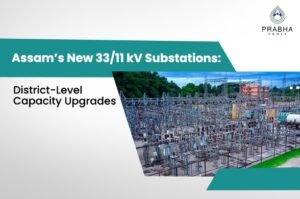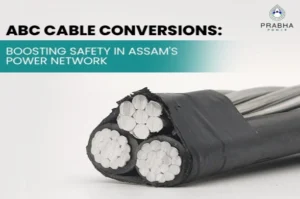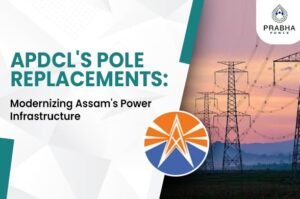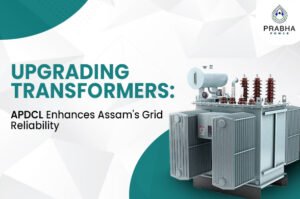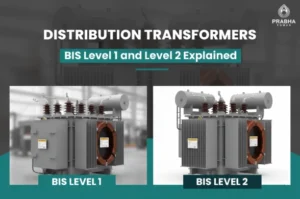
You may think that the selection of armoured or unarmoured cables is just another technical detail, but it will probably be one of the most important decisions you make to install a sustainable solar power system. Cables are the unsung heroes of a solar installation, carrying power day in and day out, so selecting the right type of cable can be a significant improvement for safety, longevity, and performance.
The demand in India for solar energy has grown astronomically, with over 72 GW of solar capacity installed in 2024, and is growing rapidly with efforts like the PM Surya Ghar Muft Bijli Yojana. Unfortunately, one of the most ignored decisions is cabling.
Selecting between armoured and unarmoured cables is more than a technical decision; it is a decision born of the environment and a need to safeguard against impact damage and preserve the continuity of power over the long haul. Whether you are dealing with uneven ground, inclement weather or tightly packed rooftops, knowing the benefits of each cable type is essential to constructing a long-lasting, future-proof solar system.
What Are Armoured Cables?
If you’ve ever experienced damage to exposed wiring from rodents or digging, you’ll understand the level of importance of armoured cables, especially when dealing with solar installations where longevity of performance is so important.
Armoured cables are specifically designed with a strong outer layer, made of metal (typically galvanised steel or aluminium). This outer metallic sheath acts as a shield from physical damage, moisture and even pests, protecting the core conductors inside. Whether cables are laid underground, across open fields, or exposed to whatever weather elements, having that extra layer of protection makes a significant difference.
They’re regularly the solution of choice for tough industrial applications, large solar farms, or any project where the cables will be located far apart from each other without the option of full conduit protection. These applications have a high risk of wear and tear already, and having a cable that can actually take a hit is not just smart, it’s a necessity.
If your solar project involves outdoor, high-risk or high-traffic environments, armoured cables offer a rugged reassurance that your power flow will continue uninterrupted for years on end.
Key Features of Armoured Cables
Outer Protection: The most recognisable trait of armoured cables is their tough metallic armour, either galvanised steel or aluminium, which serves as a protective layer, shielding the sensitive inner conductors from getting damaged in physical situations such as cuts, impact, or even chewing by rodents. Therefore, armoured cables can be quite fashionable in outdoor environments where cables can often face unexpected events.
Durability: With an extra layer of protective armour, these cables will last. Armoured cables are less likely to show wear and tear when exposed to harsh weather scenarios, heavy machinery, or a rough landscape. In shorter terms, armoured cables demonstrate a longer lifespan compared to unarmoured cables, meaning your solar power will have less downtime, ensuring less maintenance needs and replacement costs.
Safety: The extra metal layer not only protects the cable itself, but also increases safety. Armoured cables are more resistant to pressure and impacts that can cause short circuits or similar electrical faults. There are situations where this armouring makes them a safer choice if accidents or heavy traffic are likely to occur.
Installation: Armoured cables offer some practical benefits in that, in many cases, they can be laid directly underground without further conduits or protective casings. This means installation may be made simpler in challenging environments, such as fields or construction sites, due to saved time and not having to use additional materials. Due to the weight of armoured cables and the fact that they are difficult to work with, care and properly trained installation personnel are suggested to adequately handle and install the armoured cables without damage.
What Are Unarmoured Cables?
Unarmoured cables lack the hard outer casing that makes armoured cables robust. Instead, they rely on the insulation as their protection. Unarmoured cables are suitable for environments that are protected from physical damage, and as such are better suited to controlled indoor environments or where they’re located inside PVC conduits.
Unarmoured cables are light and flexible, which makes them much easier to handle and install. For example, if you are planning to install a rooftop solar system at home, unarmoured cables are often the best option for internal wiring although they do need to be well protected with conduit pipes.
Unarmoured cables are quite economical, which makes them a suitable choice for small to mid-sized solar installations where cost is particularly important to the end user and the environment is not too harsh. Again, while lighter and easier to work with than armoured cable, they should still have some form of external protection through conduits and/or conduits to limit possible accidental damage.
Key Features of Unarmoured Cables
Lightweight: It’s easier to transport and manage.
Flexible: More bendable for internal and complex wiring.
Cost Effective: Relatively lower up-front cost than armoured ones.
Requires additional protection: Must be laid inside conduits or trunking in areas of risk.
Armoured vs Unarmoured Cables: The Key Differences
Understanding the cable differences between armoured and unarmoured types can save you time, money and headaches down the line, particularly with solar power systems in varying terrain. Armoured cables have a lot of mechanical protection due to their metallic sheath.
They’re best suited for outdoor, underground, or industrial applications where mechanical stress is commonplace. Armoured cables are expensive, but the additional cost means that you can guarantee greater longevity and less chance of damage/quicker time to repair. Other drawbacks exist, such as they tend to be heavier and less flexible, so you may need more experience to install, but the upside is you can typically run them straight in the ground without conduit.
Alternatively, unarmoured cables tend to be lighter and cheaper, but macerators’ performance and installation flexibility are impractical if they are not protected (i.e. in walls, conduits, or inside buildings). In general, unarmoured cables are lighter, more flexible, and easier to install; however, do not offer much protection from environmental hazards or accidental impact, therefore they must be enclosed in cableways or protected from impact if exposed.
In brief, armoured cables are ideal for heavy-duty, ready-for-battle conditions, while unarmoured cables are a safe option for controlled conditions (e.g. inside buildings) where flexibility and cost savings are more important.
Where Are Armoured Cables Used in Solar Systems?
Often, solar installations are located outside on land that could be rough and exposed, which makes the benefits of armoured cabling very relevant:
Outdoor and Underground Cabling:
When you are putting cabling from rooftop panels to ground inverters or batteries, you could be challenged with tough terrain enough to create cable damage. Armoured cables are crush-resistant, moisture-resistant, and even rodent bite-resistant.
Commercial or Utility-Scale Solar Projects:
In utility-scale or commercial solar farms where cables can run long distances through rural terrain, armoured cables are a must. Armoured cables protect long runs of cables from outside damage and allow for continuous power transmission without interruption.
Severe Weather Conditions:
Regardless of the intense rainfall, rocky soils or construction zones, mechanisms insured with reinforced armour gives your electrical circuits the protection it needs.
Where Are Unarmoured Cables Used in Solar Systems?
Do not underestimate unarmoured cables as they have their own benefits, and are also used in solar systems.
Rooftop Solar Panels
Most home-based rooftop solar panels (where the wiring is usually run inside conduits so the wiring is protected) will use unarmoured cables because they can bend in the required angles better to fit around corners or small junction boxes required for the installations.
Indoor Battery and Inverter Setups
There is little risk of damaging your battery bank or inverter if it is set up indoors, so unarmoured cables can not only suffice for the job, but they would also be cheaper and easier to work with.
Light and Compact Systems
For small or modular solar systems (e.g. portable kits or even DIY solar setups) unarmoured cables are preferential due to the small size and light weight of unarmoured cable, making the wiring easier to work with.
Choosing the Right Cable for Your Solar Project
When determining whether to use armoured or unarmoured cables in your solar project, consider the following:
1. Environment
Armoured: Use armoured cables when the cables will have high exposure (sun, rain, soil pressure, etc.) or if the exposed cables may have threats from rodents.
Unarmoured: Use unarmoured cables when the cables are well protected and will be in a clean, dry location (indoor, conduit, etc.).
2. Distance and Type of Installation
In general, if the installation involves longer cable runs, especially underground, you should use armoured cables. If the installation is a short distance and fully protected the use of unarmoured cables is acceptable.
3. Safety and Compliance
When making decisions, you should always follow your local safety guidelines and solar installation codes. In many situations, the local regulations/standards require the use of armoured cables for certain installations.
4. Practical and Budgetary Considerations
Although armoured cables are more expensive, they can save on other expense when protecting the cables since armoured cables can reduce the need of additional protective conduits. Unarmoured cables may cost less initially, but you may have additional costs for conduits, fittings and other cables.
Are Armoured Cables Better for Solar Installations?
It’s not about which cable is “better” – it’s about what will work best for your setup in a certain situation. Armoured cables are generally more suited for outdoor projects or major solar installations where durability is critical. Their sturdier construction helps guarantee that solar panels perform consistently, even in rural areas, open markets, or under severe weather conditions.
In saying that, there are just as capable uses of unarmoured cable. For most residential users, or smaller indoor and installation systems, unarmoured cable can usually provide a good level of utility versus price against unarmoured cables. Unarmoured cables can perform the necessary requirements without complicating the cable installation or inflating the cost of the total project, especially where conduits are already used for protection.
What About Cable Protection?
When it comes to protection, there is the cable type and how you install it!
When using Armoured Cables:
– Can be buried directly in the earth.
– They don’t need conduits, as a general rule.
– Ideal for long-term installations.
When using Unarmoured Cables:
– Must be encased in conduit pipes or trunking.
– Avoid running exposed, reducing potentially dangerous fire/electric risks.
– Ideal for more temporary, accessible installations.
Installation Tips for Safe and Reliable Wiring
Here are a few installation tips for installation of armoured or unarmoured cables:
- Use appropriate cable glands for the type of cable you are using.
- Do not overstress or bend cables farther than the cables allowable bending radius.
- Keep connections waterproof, especially if being used outdoors.
- If burying, ensure that armoured cables are burried at least 0.5-1 meter below ground and away from water lines.
- If on a roof, clip cables neat away from sharp edges.
Cable Certification and Quality Matters
Whether it’s armoured or unarmoured, quality should never be compromised. Always look for IS-certified or IEC compliant solar cables. While they may seem like a deal at first glance, cheap, low-quality cables wear out more quickly, may cause voltage drops and subsequently, lessen your system’s performance, and worst of all, could even present fire hazards.
This is why Prabha Power is so particular about what we supply. We only recommend and supply high-quality solar cables that have passed rigorous testing on insulation, durability, and heat exposure and best of all, conform to Indian and international safety standards. When safety counts, solar power should be safe and effective!
Final Thoughts: Armoured vs Unarmoured Cables
Choosing between armoured vs unarmoured cables comes down to the requirements of your solar project! Armoured cables are extremely durable for high-risk areas, and unarmoured cables are a great fit for basic, indoor applications. Knowing these differences in cables will allow you to maximize your energy transmission efficiency, lengthen cable life, and reduce maintenance expenses.
Conclusion:
When deciding between an armoured and unarmoured cable, the decision relies not only on technical specifications, but aligning your needs of environment, budget, and the future you want to achieve. Armoured cables provide a high level of protection and are ideally designed for rough and outdoor applications. Unarmoured cables are excellent for indoor and lower-risk installations where flexibility in installation is required. Knowing which option is designed for the best use is crucial.
Whether you are supplying power to a domestic rooftop or powering a remote solar farm, contact Prabha Power, as we can help you find the correct recommended cables that balance cost with protection and performance with no compromise on safety or efficiency.
Call our team to get started at +91 93948 79486


